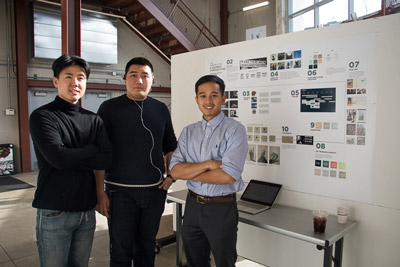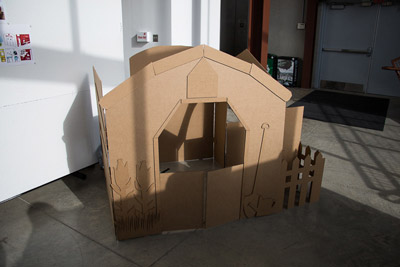These CCAD students have their designs on social change

After 12 weeks of taking a deep dive into social issues, engaging in service activities and a long-term research project, students in Columbus College of Art & Design’s Design for Social Change course shared their “big picture” work this week in a poster presentation for the college community.
The Design for Social Change course is in its second year. Interior Design Chair Kelly DeVore, who led the class, said students were encouraged to research their issues, including conversations with community member-stakeholders. They were not required to solve the issues presented, but to consider them deeply.
“My goal is that they look at the world a little differently, with bigger eyes toward empathy and helping communities outside of their own,” said DeVore.
Projects included an examination of how to encourage critical thinking among students, a look at mental health and how technology could be harnessed to address suicide, apps and materials to encourage recycling, assisting soldiers with post-traumatic stress disorder (notably, said DeVore, members of the group working on this project included veterans who had served in the military in South Korea and China), confronting the challenges of gentrification in Columbus neighborhoods, and more.
Mariah Zambuto (Industrial Design, 2019) and Katie Schwendeman (Advertising & Graphic Design, 2018) took a look at food insecurity.
“There were a lot of ways we could go about the topic. We could talk about food deserts, we could talk about world hunger in general, we could talk about the lack of healthy food accessibility — a bunch of different topics,” said Zambuto. With the global population expected to hit 9.7 billion by 2050, they decided to look at agriculture and quickly discovered that farmers represent a rapidly aging demographic. So the question became, “What can we do to make food more accessible, to make farming more of a sought-out career?” she said.
“There were a number of different solutions we ideated at different age groups, and, of course, it’s important to get high school students to look at agricultural careers as a valid path to follow, but the way we teach children, from a very young age, is through play. And so if you look at the top five careers that children want to pursue, they tend to be jobs that give them the title of ’hero,’ or they’re high-paying, and they’re also public service careers, like teachers, doctors, firefighters, and police officers. Children desire those careers and farming is nowhere in sight. Kids don’t want to be farmers. So, we decided to create a playhouse; we call it the ’Everyday Heroes’ playhouse, and it showcases four different careers — and we have equalized farming with these other public service careers,” said Schwendeman, who herself studied animal science at Ohio State University before transferring to CCAD.
Zambuto and Schwendeman’s cardboard prototype for the playhouse includes different features on each side, showcasing a firehouse, a school, a hospital, and a farm.

“I would hope it’s not just like, ’Oh, cool, a playhouse,’ I would hope it speaks to the certain things you dream about as a young kid,” said Zambuto.
“I hope it evens the playing field a little bit,” said Schwendeman. “One of the biggest takeaways that Mariah and I have from it is the hope that we continue to view farming as a noble career.”
And, the pair said, they hope consumers will be prompted to make thoughtful choices about the sources of their food.